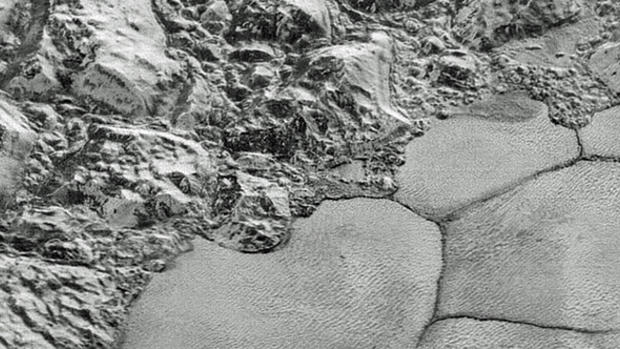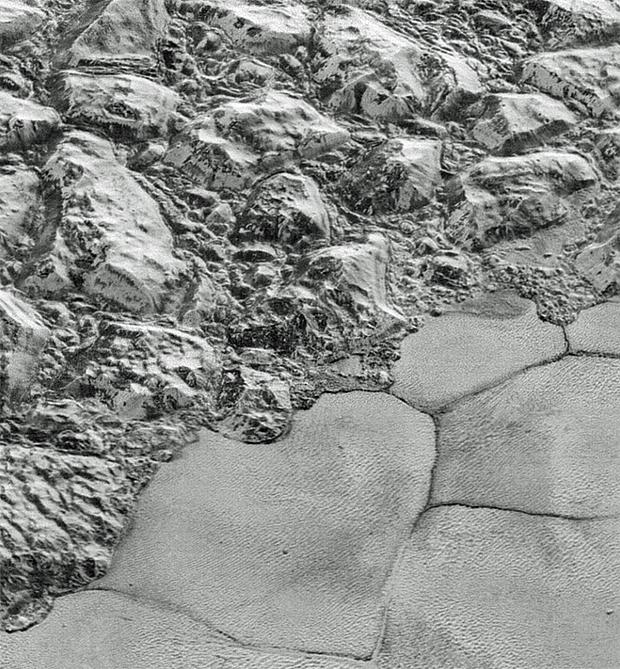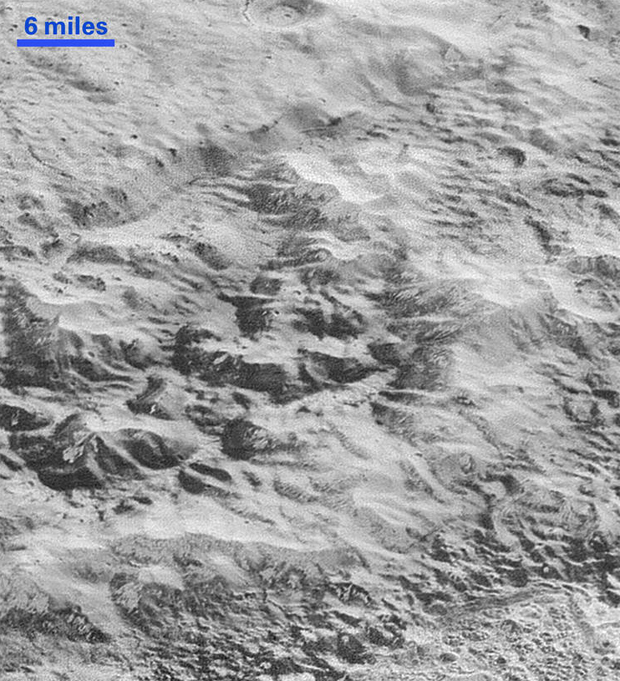NASA releases sharpest pictures yet from Pluto probe
Stunning, high-resolution view of Pluto's frigid surface, shot just 15 minutes before NASA's New Horizons probe zoomed past the dwarf planet July 14, were released Friday, showing details as small as 250 feet across, less than half the size of a city block.
"These new images give us a breathtaking, super-high resolution window into Pluto's geology," Alan Stern, the New Horizons principal investigator, said in a NASA web posting. "Nothing of this quality was available for Venus or Mars until decades after their first flybys; yet at Pluto we're there already -- down among the craters, mountains and ice fields -- less than five months after flyby! The science we can do with these images is simply unbelievable."
The images are part of a 50-mile-wide strip starting at Pluto's horizon that stretches across intriguingly cratered terrain, the jumbled al-Idrisi mountains, the shoreline-like boundary between the mountains and the heart-shaped region known as Sputnik Planum and on across its icy plains.
The images were captured by New Horizons' Long Range Reconnaissance Imager, or LORRI, instrument at a range of just 10,000 miles from Pluto's surface. The pictures are six times sharper than earlier photos used to make a global map of Pluto and promise stunning new vistas in the days ahead.
One photo from the image strip shows dune-like features in the frozen plains of Sputnik Planum and the intersection with mountainous terrain.
"The mountains bordering Sputnik Planum are absolutely stunning at this resolution," said John Spencer, a New Horizons science team member. "The new details revealed here, particularly the crumpled ridges in the rubbly material surrounding several of the mountains, reinforce our earlier impression that the mountains are huge ice blocks that have been jostled and tumbled and somehow transported to their present locations."
Another frame from the image strip shows large craters in unprecedented detail, revealing dark layers and areas that appear to have been filled in by transported ices. Another shot shows evidence of faulting and erosion in a mountainous region informally known as "the Badlands."
John Grunsfeld, director of NASA's Science Mission Directorate, said the photos "demonstrate the power of our robotic planetary explorers to return intriguing data to scientists back here on planet Earth."
"New Horizons thrilled us during the July flyby with the first close images of Pluto, and as the spacecraft transmits the treasure trove of images in its onboard memory back to us, we continue to be amazed by what we see," he said.
Because of Pluto's enormous distance -- more than 3 billion miles -- and the modest power of New Horizon's radio transmitter, it will take 16 months for the spacecraft to beam back all of the data recorded on board during its historic approach, flyby and departure in July.
More high-resolution images are expected in over the next few days.




